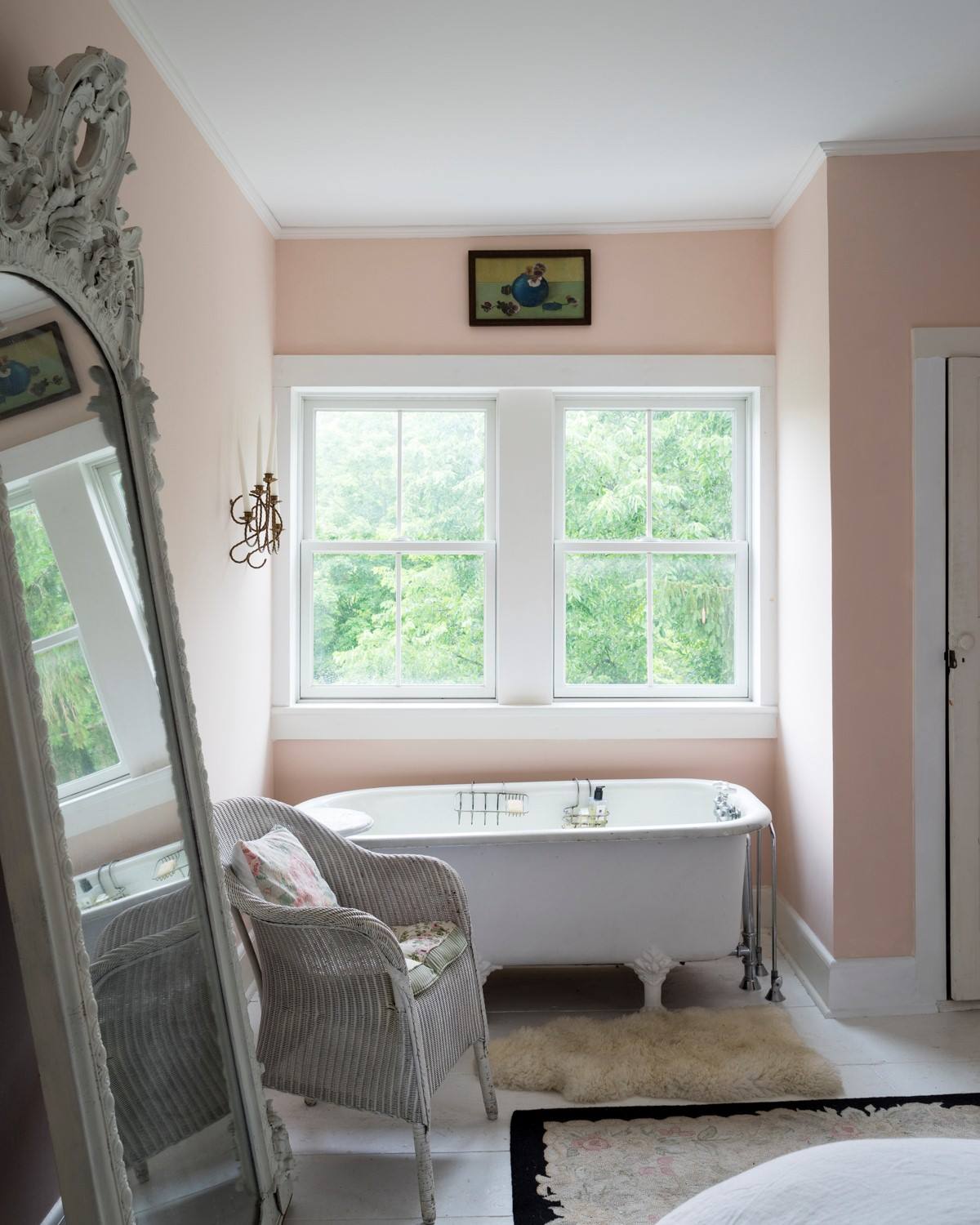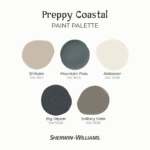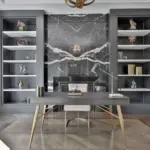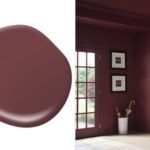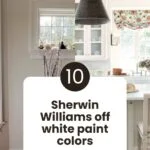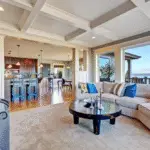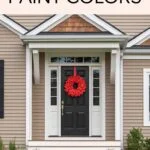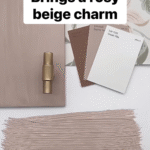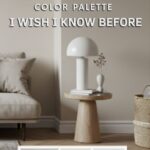Walk into any professionally designed home and you’ll likely see one detail consistently pulling everything together: white trim. Whether framing a soft gray wall in the living room or bordering a dramatic navy in the dining area, white trim acts like a picture frame — highlighting, enhancing, and anchoring your paint colors.
But what exactly is “white trim”? In interior design, trim refers to the architectural moldings around doors, windows, baseboards, and ceilings — and when painted white, it creates clean visual lines that define and elevate the look of any room.
So, why does white work so well?
- It’s neutral but powerful: White doesn’t fight with other colors. Instead, it enhances them — making bold colors pop and soft tones feel crisp.
- It brings clarity and light: Especially in rooms with low natural light, white trim reflects light and makes the space feel brighter and more open.
- It adds structure: Visually, it outlines the room like a blueprint, giving shape and form to otherwise plain walls.
It’s no wonder white trim has been a staple in homes for over a century — it’s as classic as it is current.
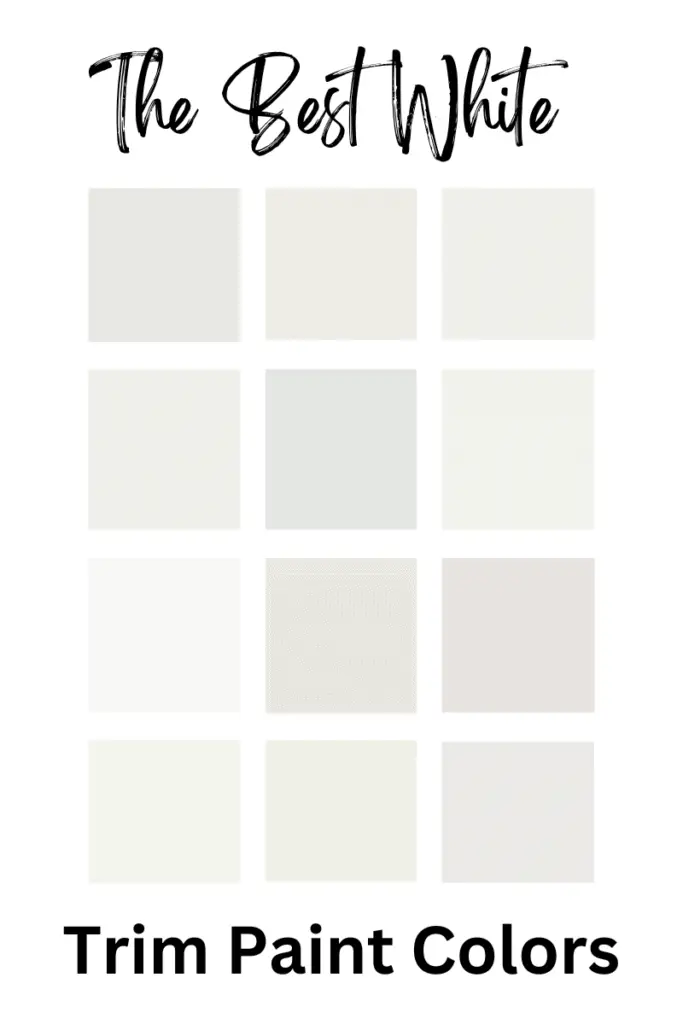
The Psychology of White: Clean, Pure, and Crisp
Color psychology plays a huge role in how we perceive spaces. And white, as a trim color, sends a strong visual message: cleanliness, openness, and simplicity.

Pro Grade Paint Roller Kit, Brush & Roller for Professionals & Homeowners
Perfect for smooth finishes on your interior walls. Ideal for home improvement enthusiasts!
Buy Now on AmazonIn the same way a fresh white shirt can sharpen your appearance, white trim instantly polishes a room.
- In modern interiors, it adds crisp edges and sleek contrast.
- In traditional or farmhouse designs, it feels soft, inviting, and timeless.
- In boho or eclectic spaces, it provides a visual rest between the layers of pattern and color.
White is also emotionally neutral — it doesn’t demand attention, which allows your main wall color to take center stage.
👉 Pro tip: If you want a peaceful, calming atmosphere, pair white trim with soft, desaturated tones like sage green or dusty blue. For drama, pair it with deep charcoal or navy.
Popular White Trim Paint Colors (And Why Designers Love Them)
Not all whites are created equal. Some have warm undertones (yellow, red, pink), while others lean cool (blue, green, gray). Choosing the right white for your trim depends on the wall color and the overall vibe you want.
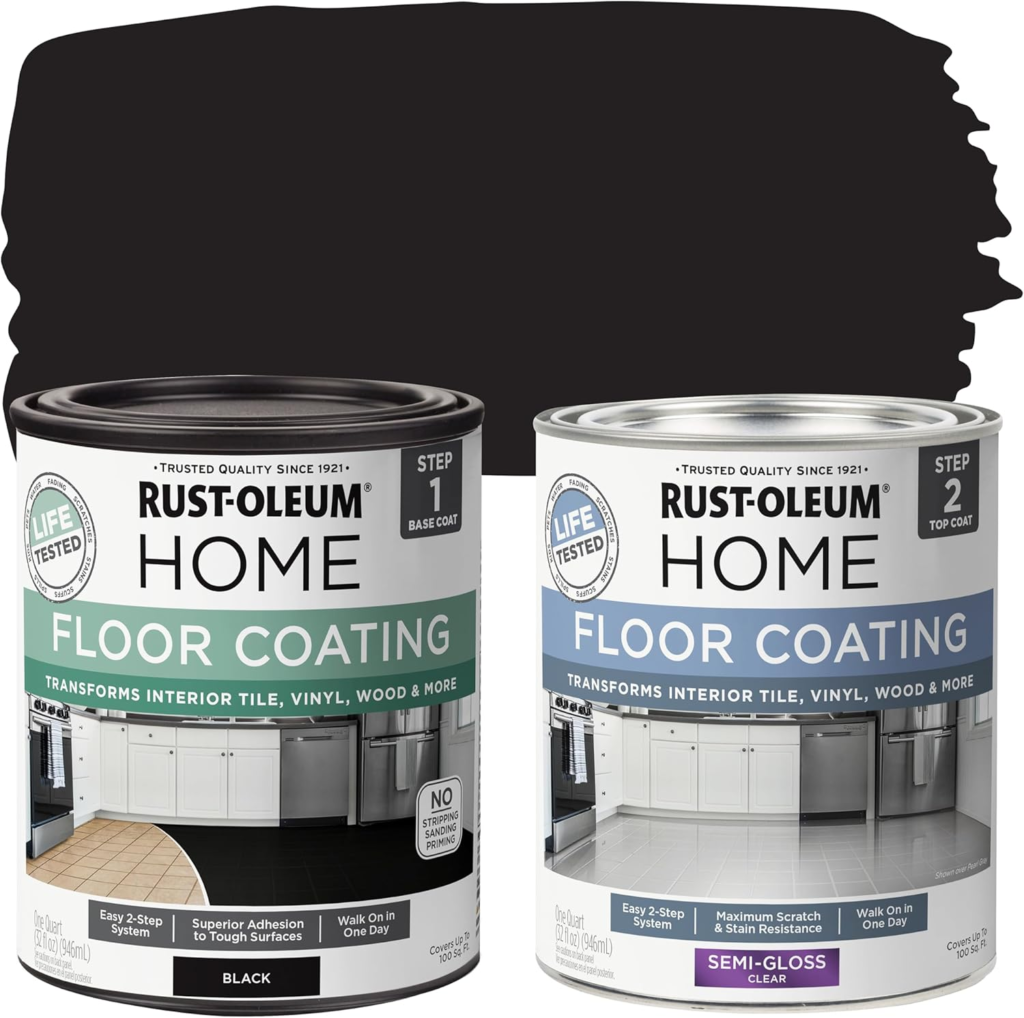
Rust-Oleum 367605 Home Interior Floor Coating Kit, Semi-Gloss Black
Ideal for updating outdated flooring at a fraction of the cost of replacement and adheres without stripping, sanding or priming.
Buy Now on AmazonHere are a few of the most recommended white trim colors by interior designers:
1. Benjamin Moore Chantilly Lace (OC-65)
- Undertone: Pure, clean white with minimal undertones
- Why it works: Great in modern homes with cool wall colors. It’s bright, crisp, and goes with everything.
- Best for: High-contrast looks or minimalistic spaces.
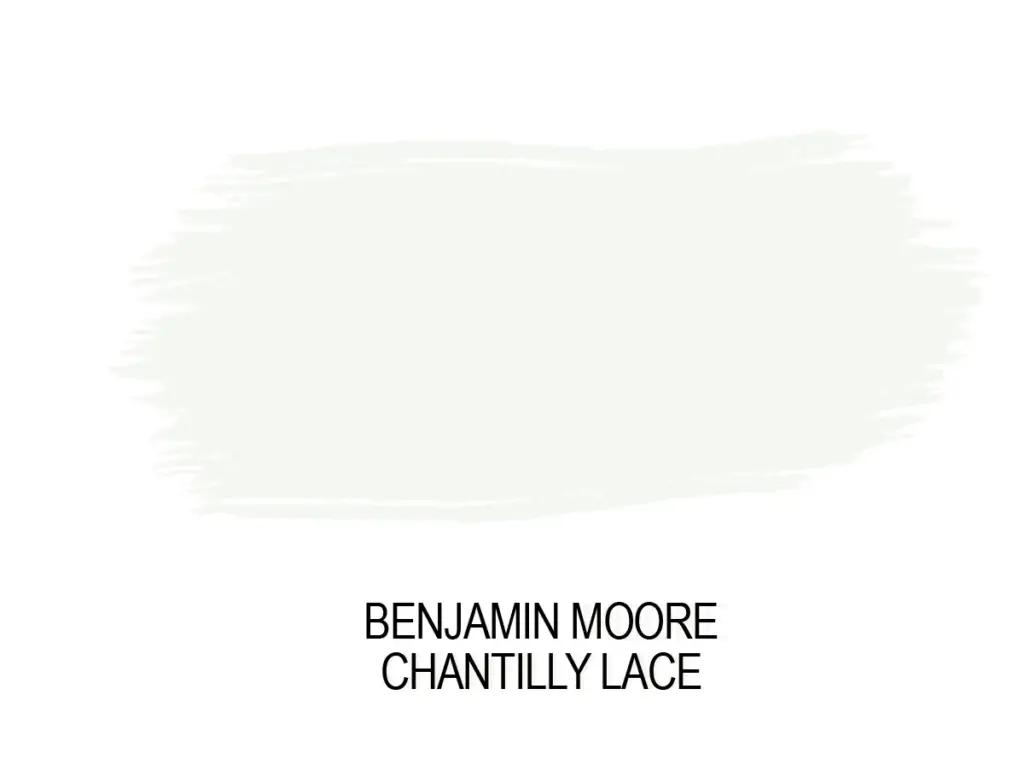
2. Benjamin Moore Simply White (OC-117)
- Undertone: Slightly warm with a creamy softness
- Why it works: Adds warmth without turning yellow. Ideal for pairing with warm neutrals, earthy greens, or classic beiges.
- Best for: Farmhouse, coastal, or traditional interiors.

3. Sherwin-Williams Extra White (SW 7006)
- Undertone: Cool white, slightly blue undertones
- Why it works: Excellent choice for rooms with cooler hues like grays and navy.
- Best for: Modern and transitional spaces.
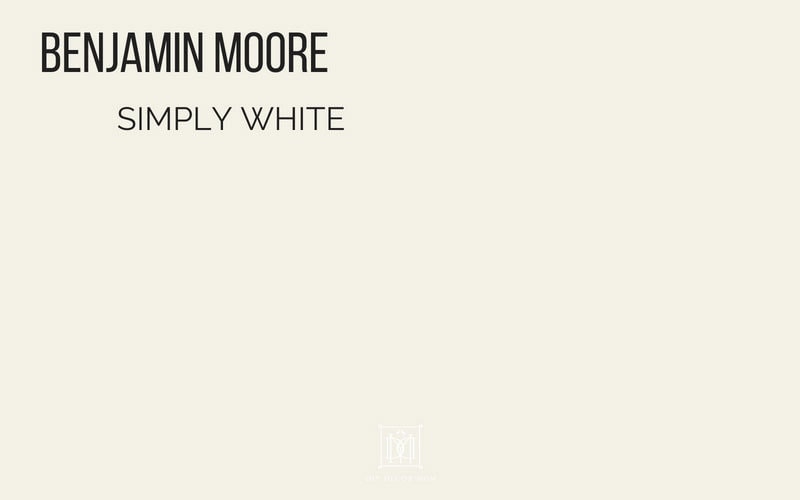
4. Sherwin-Williams Pure White (SW 7005)
- Undertone: Slightly warm but reads as a true white
- Why it works: Balances well with both warm and cool tones.
- Best for: Versatile enough for any room — one of the safest bets for a whole-house trim color.
👉 (Related: How to Choose the Best White Paint for Trim and Walls)
Gloss, Satin, or Semi-Gloss: Which Sheen Is Best for White Trim?
Paint sheen plays a huge role in the finished look and cleanability of your white trim. A high-gloss white will look sleek and reflective, while a matte white might feel too flat or dull for trim.
Let’s break it down:
Matte or Flat Sheen
- Pros: Hides imperfections on the surface
- Cons: Not durable, hard to clean
- Verdict: Not recommended for trim — avoid unless you’re doing something intentionally rustic.
Eggshell or Satin Finish
- Pros: Slight shine, easier to clean than flat
- Cons: May look dull on trim compared to walls
- Verdict: Okay for low-traffic trim areas like crown molding
Semi-Gloss Finish (Most Common)
- Pros: Smooth, clean, and highly durable; easy to wipe down
- Cons: Will show brush marks if poorly applied
- Verdict: Best choice for most white trim — balances aesthetics and function.
High Gloss
- Pros: Super sleek and dramatic; very easy to clean
- Cons: Shows every flaw and imperfection
- Verdict: Best used in formal settings or modern homes where you want that pop and shine
👉 Designer Tip: Use the same white paint for all trim but change the sheen to define different areas (semi-gloss for baseboards, satin for crown molding, gloss for door frames).
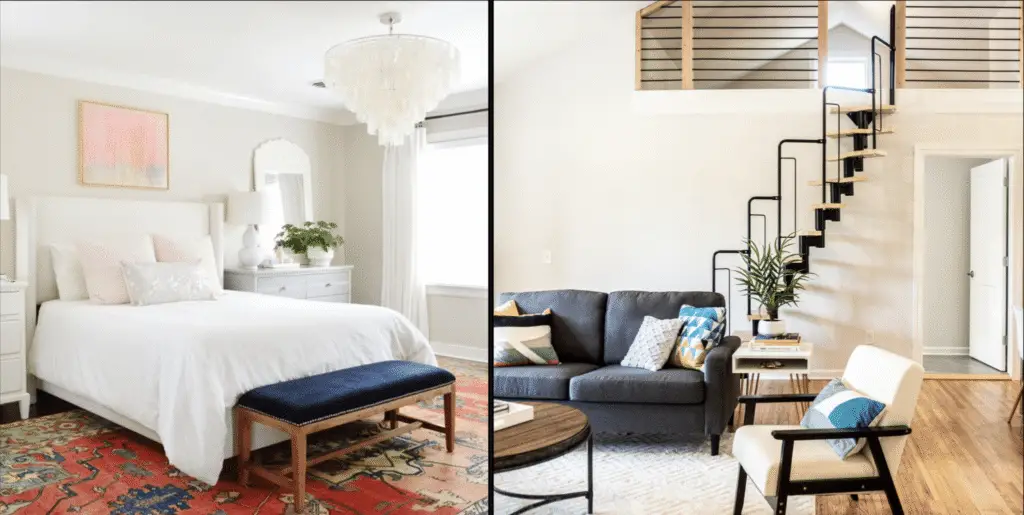
How White Trim Enhances Wall Colors
White trim doesn’t just sit quietly in the background — it elevates your entire color scheme.
Here’s how:
- ✅ Adds Contrast: A dark navy or forest green wall with white trim creates an eye-catching, elegant effect.
- ✅ Brightens Soft Tones: Muted shades like greige or taupe look fresher and more refined.
- ✅ Provides Visual Breaks: In colorful rooms, white trim gives the eye a place to rest, creating balance.
- ✅ Unifies an Open Floor Plan: Using white trim throughout your home can create consistency, even if wall colors vary by room.
Think of white trim as the perfect supporting actor — it makes the lead (your wall color) shine even brighter.

Matching White Trim to Undertones in Wall Color
This part is where many homeowners make mistakes — pairing a cool-toned white trim with a warm wall color, or vice versa, can result in a clashing, off-putting look.
Here’s how to avoid that:
- 🧊 Cool Wall Color (Blue, Gray, Cool Green) → Use a cool white like Chantilly Lace or Extra White.
- 🔥 Warm Wall Color (Beige, Cream, Terracotta) → Choose a warm white like Simply White or Alabaster.
- 🌈 Bright or Saturated Wall Color (Navy, Teal, Plum) → Stick with neutral whites to avoid conflicting undertones.
Want an easy trick? Hold your white paint chip next to your wall color in both daylight and indoor light. If the white starts to look yellow, it’s too warm. If it looks bluish or stark, it’s too cool.
White trim is like the little black dress of interior design — it goes with almost everything, but it takes the right pairing to make it truly shine. Whether you’re going for calm and cozy, bold and dramatic, or fresh and airy, the right wall color can make your white trim pop, and vice versa.
Here’s an expert-curated list of 30+ top paint colors that look stunning with white trim. From neutrals to moody tones, every entry includes color psychology, room ideas, and why it works.
🧘♀️ 1. Soft Greige – Benjamin Moore Edgecomb Gray
A perfect mix of gray and beige, this hue adapts beautifully to different lighting. It offers a subtle warmth that keeps spaces inviting and pairs effortlessly with crisp white trim for contrast.
- Best for: Hallways, living rooms, open-concept spaces
- Why it works: The warm undertones prevent the room from feeling cold, while white trim sharpens the borders
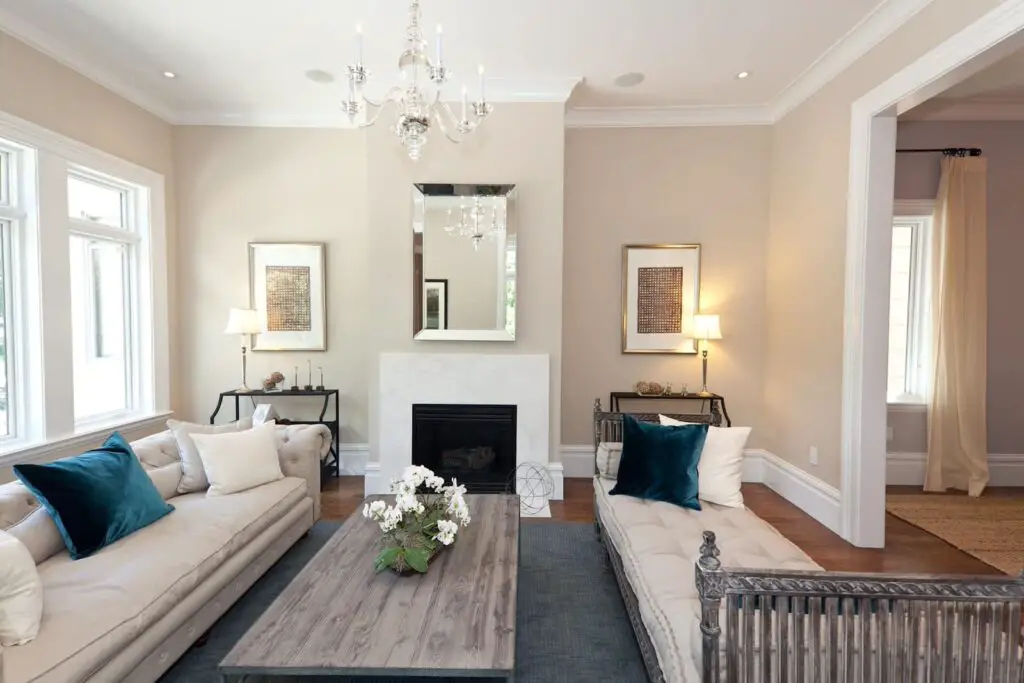
☕ 2. Warm Beige – Sherwin-Williams Accessible Beige
An elevated take on traditional beige. This versatile color feels cozy without being dated and allows white trim to create clean boundaries without overwhelming.
- Best for: Bedrooms, family rooms
- Why it works: A rich base with enough warmth to soften white trim and avoid stark contrast
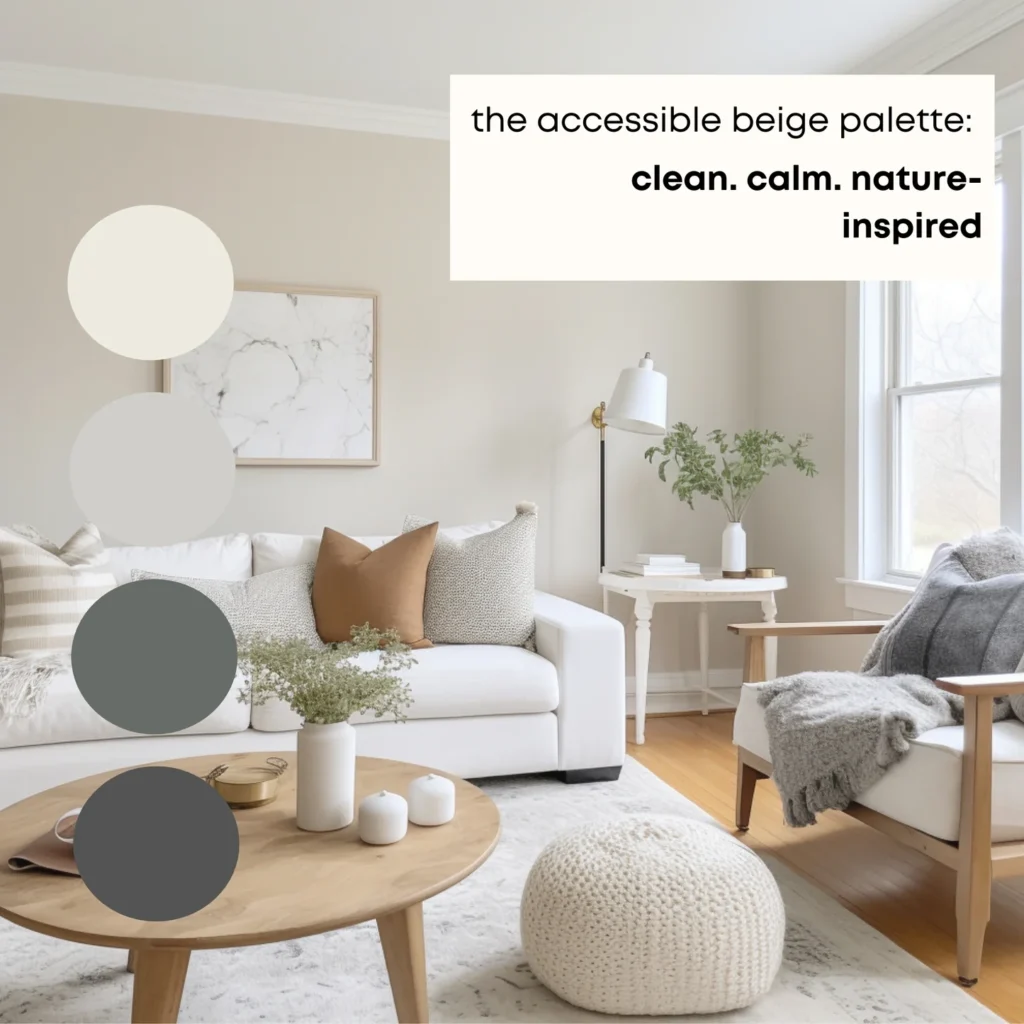
🌌 3. Deep Navy – Benjamin Moore Hale Navy
One of the most popular dark blues for interiors. Hale Navy brings elegance and depth. When paired with bright white trim, the contrast is bold, striking, and timeless.
- Best for: Dining rooms, libraries, powder rooms
- Why it works: White trim highlights the architecture and balances the darkness of navy
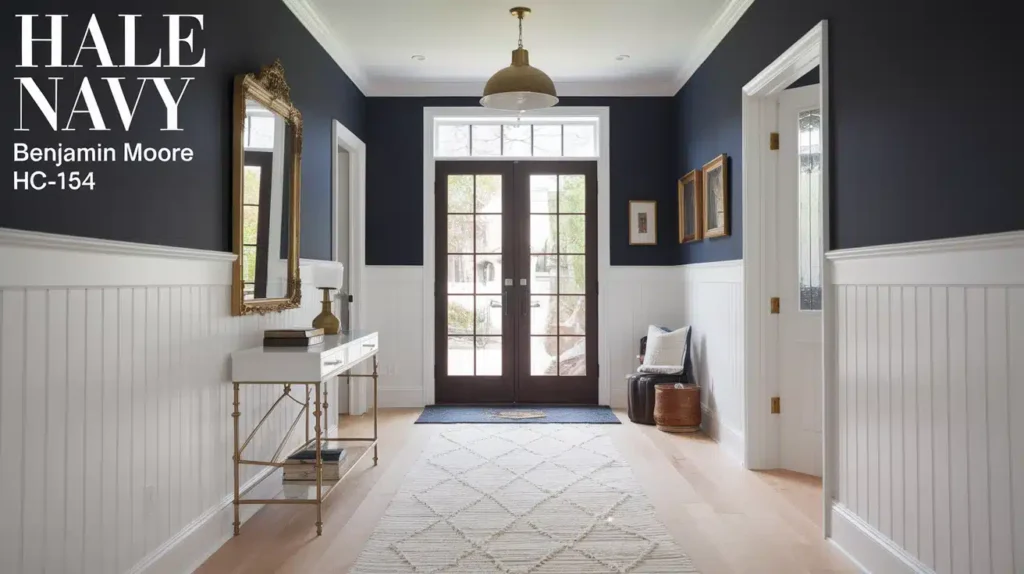
🌸 4. Dusty Rose – Farrow & Ball Pink Ground
Romantic and soft, this muted pink isn’t too sweet. White trim adds sophistication and prevents it from feeling juvenile.
- Best for: Girls’ rooms, dressing rooms, reading nooks
- Why it works: The pink warms up the space while white trim makes it feel fresh and tailored
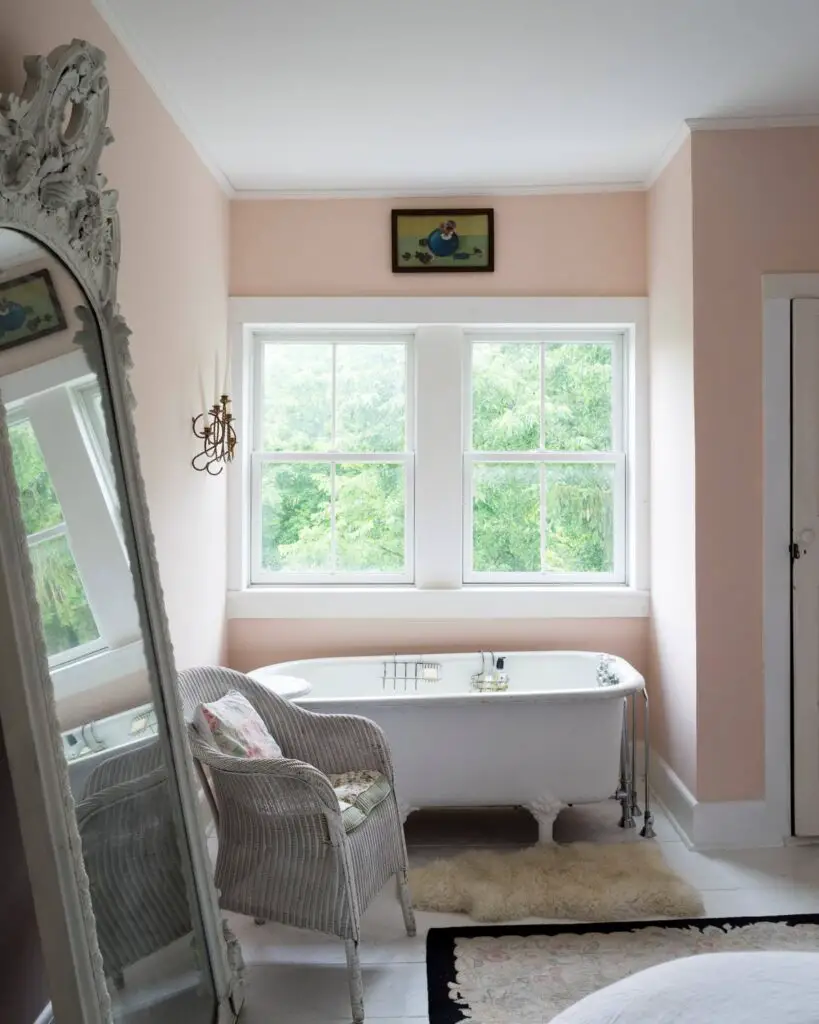
🌿 5. Sage Green – Sherwin-Williams Clary Sage
Earthy and calm, this green creates a grounded, serene atmosphere. White trim brightens the look and adds crispness.
- Best for: Kitchens, bathrooms, mudrooms
- Why it works: Green is calming, and the white trim makes it feel clean and spa-like
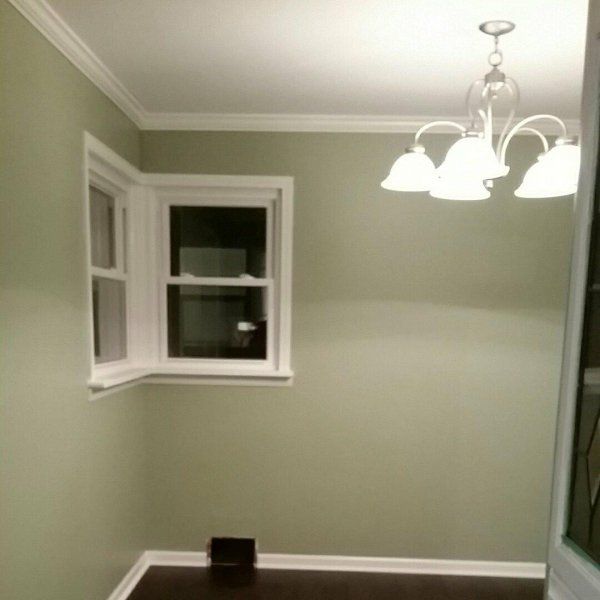
☁️ 6. Soft Sky Blue – Behr Light French Gray
A misty blue-gray with a cool undertone. It reads light and breezy, and pairs beautifully with sharp white trim for a coastal vibe.
- Best for: Bedrooms, bathrooms
- Why it works: Cool tones relax the mind, while white keeps things bright and open
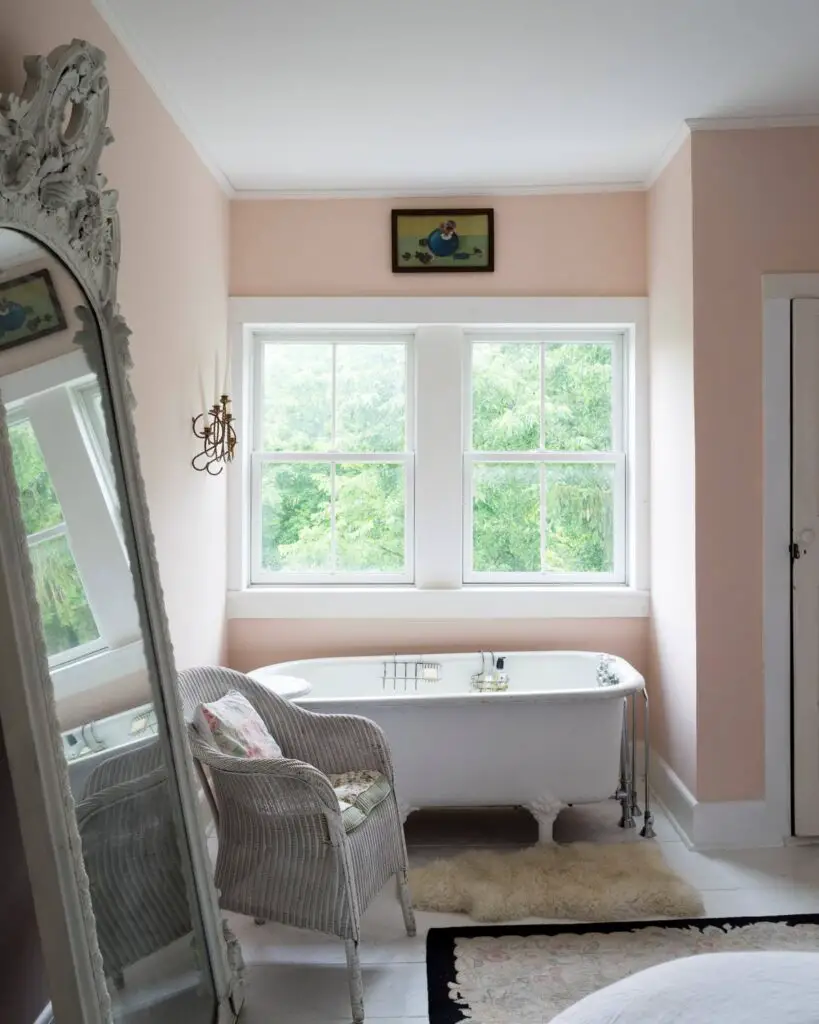
🏛️ 7. Classic Taupe – Benjamin Moore Revere Pewter
The holy grail of warm greys, Revere Pewter blends in modern and traditional settings. It sits in the perfect neutral zone and works with every kind of white trim.
- Best for: Entryways, kitchens, living rooms
- Why it works: Offers warmth without overwhelming — white trim balances and frames

🌲 8. Forest Green – Benjamin Moore Salamander
Dark, dramatic, and full of depth. When paired with white trim, the result is elegant and moody with just the right amount of drama.
- Best for: Home offices, accent walls, formal dining
- Why it works: White provides visual structure and highlights the richness of the green
🖤 9. Rich Charcoal – Sherwin-Williams Peppercorn
Peppercorn is a near-black charcoal that gives any room serious sophistication. The contrast with white trim adds crisp edges and keeps it from feeling oppressive.
- Best for: Modern bedrooms, fireplaces, staircases
- Why it works: The high contrast creates a bold but livable look
💕 10. Blush Pink – Behr Rose Sorbet
A softer take on pink — subtle enough for adult spaces. White trim elevates the elegance and defines the color without overpowering.
- Best for: Living rooms, feminine offices, nurseries
- Why it works: Blush soothes, and white trim keeps it from going too romantic
🧱 11. Terracotta – Sherwin-Williams Cavern Clay
This warm, earthy tone brings out rustic charm. White trim offers a fresh counterpoint, modernizing the look.
- Best for: Dining rooms, kitchens, southwestern-inspired homes
- Why it works: White adds sharpness to this naturally grounded hue
🌸 12. Pale Lavender – Benjamin Moore Spring Iris
A delicate, tranquil purple with cool undertones. White trim enhances its airiness.
- Best for: Bedrooms, guest rooms
- Why it works: Lavender feels soft and dreamy, and white outlines give it structure
🍂 13. Warm Terracotta – Farrow & Ball Red Earth
A bolder, redder take on classic terracotta. Paired with bright white trim, this combo gives a vibrant yet vintage look.
- Best for: Accent walls, eclectic interiors
- Why it works: Warm wall + crisp trim = dynamic and balanced
🌞 14. Buttery Yellow – Behr Creamy Mushroom
Not too bright, not too pale — just right. Buttery yellow gives off a cheerful energy, and white trim stops it from becoming overwhelming.
- Best for: Kitchens, breakfast nooks, sunrooms
- Why it works: Warmth + clarity = inviting space
🧘 15. Soft Teal – Benjamin Moore Palladian Blue
Somewhere between green and blue, this color brings in vintage flair with a fresh feel. White trim brings out its brightness.
- Best for: Bathrooms, accent walls, reading spaces
- Why it works: Inviting, unique, and calming
🫒 16. Olive Green – Sherwin-Williams Ripe Olive
Moody and natural. When paired with white trim, it gives an earthy, designer-forward vibe.
- Best for: Kitchens, entryways, accent walls
- Why it works: Deep tone is grounded, and white adds air
🍄 17. Muted Clay – Behr Canyon Dusk
A dusty, muted red-brown that feels organic and natural. Perfect for boho or minimalist interiors.
- Best for: Hallways, art spaces
- Why it works: White trim offers crisp boundaries and keeps it clean
🌊 18. Smoky Blue – Sherwin-Williams Smoky Azurite
This dusky blue offers subtle moodiness. White trim makes it stand out and keeps the vibe upscale.
- Best for: Bedrooms, powder rooms
- Why it works: Calming yet dramatic with the right trim contrast
🧼 19. Classic White-on-White – BM Chantilly Lace Walls + Trim
It may sound boring, but layering different sheens or undertones of white adds depth and luxury.
- Best for: Minimalist homes, Scandinavian-inspired interiors
- Why it works: A safe, timeless choice when paired thoughtfully
🍄 20. Light Mushroom – Sherwin-Williams Anew Gray
A subtle greige with earthy hints — warm enough to feel cozy, light enough to remain airy.
- Best for: Kitchens, bathrooms
- Why it works: White trim lifts and outlines the walls
⚫ 21. Black Accent Walls – Sherwin-Williams Tricorn Black
Bold, confident, and best in small doses. White trim keeps things from getting too dark or cave-like.
- Best for: Feature walls, entryways
- Why it works: Pure contrast adds luxury and sophistication
🧡 22. Coral or Salmon – Behr Coral Cloud
Lively and fun. Coral’s vibrant personality is tamed and sharpened by white trim.
- Best for: Playrooms, home offices
- Why it works: Cheerful energy, defined and grounded
🍑 23. Pale Peach – Benjamin Moore Peach Parfait
Warm, welcoming, and just a touch nostalgic. White trim adds clarity.
- Best for: Bedrooms, entryways
- Why it works: Feels inviting and well-finished
🌘 24. Charcoal Blue – Sherwin-Williams Charcoal Blue
Darker than navy with a slight smoky undertone. Adds mood without going too black.
- Best for: Dining rooms, dens
- Why it works: White trim gives it structure and prevents gloom
🏡 25. Warm Greige – Sherwin-Williams Agreeable Gray
The ultimate safe choice — works in any room with any décor. White trim adds brightness.
- Best for: Whole-house color
- Why it works: Adaptable, timeless, and crowd-pleasing
🌫️ 26. Cool Gray – Benjamin Moore Gray Owl
Subtle, sleek, and modern. Works well in minimalist or transitional spaces.
- Best for: Bathrooms, kitchens
- Why it works: Feels fresh, and white trim completes the clean look
🍇 27. Moody Plum – Sherwin-Williams Mature Grape
Unexpected yet sophisticated. White trim offers a striking contrast.
- Best for: Bedrooms, dining areas
- Why it works: Adds richness and bold character
🌪️ 28. Slate Blue – Behr Antique Tin
Blue with a gray undertone that feels both calming and classy. White trim pulls out the coolness.
- Best for: Home offices, bathrooms
- Why it works: A modern, masculine touch
🧊 29. Seafoam Green – Sherwin-Williams Sea Salt
Barely-there green that reads almost neutral. White trim boosts its airiness.
- Best for: Coastal homes, spa bathrooms
- Why it works: Gentle, breezy, and balanced
🪵 30. Mushroom Taupe – Benjamin Moore Pashmina
A warm, woodsy color that blends in with natural textures. White trim adds contrast and edge.
- Best for: Bedrooms, reading rooms
- Why it works: Sophisticated and grounded
🧵 31. Sunset Orange – Benjamin Moore Cinnamon
For the bold at heart! This spicy, saturated orange paired with white trim screams personality and warmth.
- Best for: Creative spaces, accent walls
- Why it works: White keeps it from being too loud
📌 32. Bonus: Wallpaper Feature Walls with White Trim
Don’t forget the power of wallpaper! Whether it’s botanical prints or subtle textures, wallpaper bordered by white trim looks ultra high-end.
- Best for: Accent walls, hallways
- Why it works: White framing gives wallpaper room to breathe
Expert Tips for Choosing Paint Colors with White Trim
Choosing a paint color isn’t just about what looks good on a sample card. It’s about how that color works in your space, with your lighting, and alongside white trim. Here are expert-level strategies to ensure you pick the perfect color — not just something that looks nice at the store.
🌞 Understand Your Room’s Natural Light
Lighting can completely change how a paint color appears.
Here’s how light affects wall color:
- North-facing rooms: Tend to have cool, blue-toned light. Paint colors often appear grayer or darker. Choose warm or mid-toned hues to balance the chill.
- South-facing rooms: Flooded with warm natural light. Almost any color looks good, but lighter shades may feel washed out — go richer!
- East-facing rooms: Brighter in the morning and cooler by afternoon. Look for warm undertones to avoid a shadowy feel later in the day.
- West-facing rooms: Glow in the afternoon light. Beware of warm colors looking too warm or orange. Cool tones help balance the golden hours.
👉 Pro Tip: Always test paint on multiple walls to see how lighting affects it throughout the day.
🎯 Test Before You Commit
That tiny swatch at the paint store? It’s not enough. You need to test in real conditions.
How to properly test paint:
- Buy sample pots of your top 2–3 shades.
- Paint large swatches (at least 1′ x 1′) on several walls in the room.
- Check them at different times: morning, noon, evening, and under artificial light.
- Compare against your trim paint for contrast.
OR, use peel-and-stick samples (like from Samplize). These are mess-free and easy to move around.
👉 (Related: How to Test Paint Colors Without Wrecking Your Walls)
🧬 Pay Attention to Undertones
Every paint color — even white — has an undertone.
Failing to match undertones is the #1 mistake people make when pairing wall colors with white trim.
How to identify undertones:
- Compare your color to a pure white piece of paper.
- If it looks yellowish = warm undertone.
- If it looks bluish or gray = cool undertone.
Matching tips:
- Cool white trim (like Chantilly Lace) pairs best with cool wall colors (blues, grays, purples).
- Warm white trim (like Simply White) pairs best with warm tones (beige, terracotta, warm greige).
Mismatch = muddy or clashing look.
👉 Don’t be afraid to ask the paint counter expert to help you analyze undertones. They usually know their stuff.
🧱 Use Trim to Frame Focal Points
Your white trim isn’t just a background detail. It can be used strategically to guide the eye and elevate your architecture.
Tips to maximize trim impact:
- Frame doorways and arches to draw attention.
- Highlight window frames to create visual balance.
- Use bold wall color + white trim for accent walls (especially behind beds or fireplaces).
- Add white trim to wainscoting or picture frame molding to give the wall more texture and depth.
The contrast makes a basic wall feel custom and designer-approved.
🧩 Pair with Ceiling and Flooring Colors
Many people forget this step — but your trim doesn’t exist in isolation. It lives between your wall, ceiling, and floor, so those relationships matter.
Ceiling
- White ceiling + white trim = seamless and classic
- Colored ceiling + white trim = bolder, more custom (try soft blue or blush)
Flooring
- Dark wood floors: Look stunning with cool white trim and rich wall colors.
- Light oak floors: Pair well with warm whites and warm greige walls.
- Gray or tile floors: Stick to cool whites and cool-toned wall colors for flow.
👣 Want your baseboards to “pop”? Use a glossier white than your door trim for subtle variation and shine.
🎨 Create Color Flow with White Trim Throughout the House
Here’s the thing — consistency matters. Using the same white trim color throughout your home creates visual unity, even if the wall colors change from room to room.
Why it works:
- Creates a “design signature” that ties the entire home together.
- Keeps the space from feeling disjointed when transitioning between colors.
- White trim becomes a reliable neutral anchor no matter the wall color.
For open concept homes, this strategy is almost essential to avoid chaos.
🪞 Use Sheen to Your Advantage
We talked about this earlier, but let’s revisit quickly:
Recommended trim sheens:
- Semi-gloss: Most popular. Adds shine and resists dirt/scuffs.
- Gloss or high-gloss: Luxe and dramatic. Great for modern homes.
- Satin: Soft glow, but not ideal for high-touch areas.
👉 Hack: Use the same white paint in different sheens across baseboards, crown molding, and doors for layered depth.
💬 Avoid Common Paint-Trim Mistakes
Before we wrap this part up, here are mistakes to steer clear of:
❌ Using builder-basic white without testing
- It may clash horribly with your wall color or look too stark.
❌ Skipping primer on old trim
- Yellowing and bleed-through will ruin the finish.
❌ Using flat paint on trim
- Looks dull, scratches easily, hard to clean.
❌ Not cleaning trim before painting
Dust and oils prevent good adhesion and can affect sheen.
Room-by-Room Color Pairing Ideas
Now that you understand the magic of white trim and have explored 30+ beautiful wall colors, let’s bring it all home — literally. In this section, we’ll walk you through specific room types and the best paint color + white trim combinations for each. These real-life suggestions will help you visualize the results, avoid common pitfalls, and create a cohesive, designer-level look throughout your home.
🛋️ Living Room: Warm, Welcoming, and Cohesive
The living room sets the tone for your entire home. It’s where you entertain, relax, and spend quality time — so choose a color that reflects both your style and mood.
Best Color Pairings:
- Revere Pewter + Chantilly Lace Trim: Classic, warm, and transitional.
- Hale Navy + Simply White Trim: Bold and sophisticated.
- Edgecomb Gray + Extra White Trim: Soft, neutral, and light-enhancing.
Tips:
- Use white trim to frame large windows and open archways.
- Consider adding crown molding in white for a finished, upscale look.
- For open-concept spaces, use consistent white trim across connecting areas.
🍽️ Dining Room: Dramatic and Inviting
Dining rooms are where you can get a little daring. Richer hues create a sense of intimacy and elegance, especially when paired with high-contrast trim.
Best Color Pairings:
- Forest Green (Salamander) + Pure White Trim: Luxurious and organic.
- Charcoal Blue + Chantilly Lace Trim: Sophisticated and moody.
- Cavern Clay + Simply White Trim: Warm and rustic-modern.
Tips:
- Add white wainscoting with a bold color above for a two-tone designer effect.
- Use semi-gloss white trim to reflect candlelight or pendant lighting for evening glamour.
🍳 Kitchen: Clean, Functional, and Fresh
Kitchens benefit from bright, clean tones — especially if you already have white cabinets. Use wall colors that complement the cabinetry and add visual warmth or contrast.
Best Color Pairings:
- Palladian Blue + White Dove Trim: Fresh, coastal, and calming.
- Accessible Beige + Simply White Trim: Warm and timeless.
- Sea Salt + Extra White Trim: Soft and spa-like for smaller kitchens.
Tips:
- Use white trim around windows, doors, and along the backsplash edge for a crisp frame.
- Coordinate trim with cabinet paint or backsplash grout for a cohesive flow.
🛏️ Bedroom: Serene, Soft, and Personal
Your bedroom should feel like a retreat. Choose paint colors that evoke calm, comfort, and warmth. White trim adds the perfect touch of freshness and contrast.
Best Color Pairings:
- Blush Pink (Rose Sorbet) + Simply White Trim: Feminine and modern.
- Soft Teal (Palladian Blue) + Chantilly Lace Trim: Vintage charm.
- Spring Iris (Lavender) + Extra White Trim: Serene and whimsical.
Tips:
- Use white baseboards to highlight plush rugs or hardwood floors.
- Want a cozy look? Try darker accent walls behind the bed with lighter walls elsewhere.
🚿 Bathroom: Clean, Airy, and Bright
Bathrooms are typically smaller, so light or reflective colors work well. White trim enhances the brightness, especially when paired with mirrors and glossy tile.
Best Color Pairings:
- Light French Gray + Extra White Trim: Elegant and spa-like.
- Seafoam Green (Sea Salt) + Simply White Trim: Coastal freshness.
- Charcoal Blue + White Dove Trim: Modern contrast.
Tips:
- Don’t skip on semi-gloss trim — it resists moisture and is easy to wipe down.
- Consider painting vanity cabinets to match or complement the trim for continuity.
🖥️ Home Office: Focused and Energizing
Your workspace should feel both calm and stimulating. Choose colors that increase productivity and reduce stress, and use white trim to organize visual space.
Best Color Pairings:
- Slate Blue + Chantilly Lace Trim: Cool and focused.
- Ripe Olive + Simply White Trim: Rich and grounding.
- Agreeable Gray + Extra White Trim: Clean, distraction-free environment.
Tips:
- Add white picture-frame molding on walls for texture without clutter.
- Use built-in shelves in matching trim white for a cohesive, clean look.
🎮 Kids’ Room: Playful and Flexible
Kids’ spaces benefit from cheerful, fun tones — but still need structure. White trim helps “anchor” bold or pastel hues and keeps things looking polished, not chaotic.
Best Color Pairings:
- Dusty Rose + White Dove Trim: Sweet and soft for nurseries.
- Pale Peach + Simply White Trim: Warm, friendly, and youthful.
- Coral + Extra White Trim: High energy with structure.
Tips:
- Stick to durable, wipeable trim paint — kids = mess.
- White trim frames fun wall murals or decals, making the space look intentional.
🚪 Entryway / Hallways: Flow and First Impressions
These transitional areas set the stage and should flow naturally into other rooms. Neutral wall colors + white trim = instant elegance.
Best Color Pairings:
- Greige (Edgecomb Gray) + Pure White Trim: Seamless and welcoming.
- Anew Gray + Simply White Trim: Trendy yet timeless.
- Mushroom Taupe + Chantilly Lace Trim: Understated elegance.
Tips:
- Use consistent white trim to tie together rooms with different wall colors.
- Add paneled molding or trim detail for added dimension in small spaces.
💡 Bonus Tip: Use Trim to Create Visual Height
White trim can be more than just a border — it can visually change the proportions of a room.
Here’s how:
- Paint ceiling and crown molding the same white to create the illusion of taller ceilings.
- Use picture frame trim with the same wall color inside and white on the edges to add luxury and height without adding color.
Frequently Asked Questions About Paint Colors with White Trim
This section covers the most common questions homeowners, renters, and design enthusiasts have when choosing paint colors to go with white trim. Whether you’re unsure about undertones or wondering about sheen levels, these answers will help clarify your decisions and avoid costly painting mistakes.
❓ 1. What is the best white paint for trim?
Choosing the right white is crucial. Not all whites are created equal — some have warm undertones (yellow, cream), while others are cool (blue, gray). Here are a few tried-and-true favorites:
- Chantilly Lace (Benjamin Moore) – Crisp, clean, almost pure white. Works with nearly every wall color.
- Simply White (Benjamin Moore) – A soft, slightly warm white. Great for traditional or farmhouse styles.
- Extra White (Sherwin-Williams) – A bright, modern white with cool undertones.
- White Dove (Benjamin Moore) – Warm and creamy, ideal for pairing with beiges or earth tones.
👉 Tip: Always test the trim white next to your wall color. A “perfect” white may suddenly look yellow or blue depending on lighting and surroundings.
❓ 2. Should trim be semi-gloss, satin, or matte?
Semi-gloss is the gold standard for trim because:
- It reflects light and looks crisp and polished.
- It’s easy to clean, especially around high-traffic areas like baseboards and doorframes.
- It enhances the contrast between wall and trim color.
Satin can be used if you want a softer, less reflective finish. Matte or flat is not recommended for trim — it scuffs easily and doesn’t highlight architectural detail.
❓ 3. What colors don’t go well with white trim?
White trim is versatile, but some wall colors can clash depending on tone. Be cautious with:
- Extremely muted beiges or taupes — they can look “dirty” next to clean white.
- Bright yellows — these can make white trim appear too blue.
- White walls with a clashing undertone — if your white wall is too warm and your trim is too cool, the trim may look blue or gray.
👉 When in doubt, sample your wall and trim color together on a large board in both natural and artificial light.
❓ 4. Can I mix different whites for trim and ceiling?
Yes — but do it with intention.
- If using different sheens (flat on ceiling, semi-gloss on trim), the difference is subtle even if the white is the same.
- If using different undertones, make sure they complement each other. For example:
- Use Chantilly Lace on trim and White Dove on the ceiling for a crisp/warm blend.
- Avoid pairing a stark white trim with a yellowish ceiling — it can look mismatched.
❓ 5. How do I make small rooms feel bigger with white trim?
White trim can be your best friend in tight spaces:
- Use a lighter wall color with white trim to create visual expansion.
- Paint doors and trim in the same white for seamlessness.
- Add mirrors or glossy surfaces nearby — the white trim will reflect more light.
❓ 6. Can I use white trim with dark walls?
Absolutely! It creates a stunning, high-contrast look.
- Try Hale Navy + Chantilly Lace or Forest Green + Extra White.
- Make sure to balance it with light furniture, textiles, or flooring so the room doesn’t feel closed in.
- White trim acts as a “frame,” giving dark walls a crisp edge.
❓ 7. What’s the best way to test paint colors with white trim?
Don’t rely on tiny swatches!
Here’s a step-by-step testing guide:
- Paint large sample patches (at least 12″ x 12″) directly on the wall near the trim.
- Paint or tape a piece of white trim sample next to each.
- Observe during different times of day (morning, afternoon, night).
- Evaluate in natural and artificial lighting.
👉 You can also paint foam boards and move them around if you’re testing multiple rooms.
❓ 8. Should ceilings match trim color?
This depends on your design goals:
- For a seamless look: Use the same color in different sheens (flat for ceiling, semi-gloss for trim).
- To create contrast: Use a warmer or cooler shade for the ceiling.
- To add visual height: Paint ceiling and crown molding the same white. It “lifts” the room upward.
❓ 9. What if my floors are wood or dark-colored? Will white trim still work?
Yes — white trim complements all types of flooring:
- With hardwood: White trim provides crisp contrast and highlights grain patterns.
- With tile or concrete: It balances cool materials with warmth.
- With dark floors: White trim brightens the room and prevents it from feeling too heavy.
👉 (Related: [Best Wall Paint Colors That Go with Wood Floors])
❓ 10. Can I use off-white or cream trim instead of bright white?
Absolutely. Off-white or creamy trim adds softness, especially in vintage, rustic, or traditional interiors.
Try:
- White Dove (BM) – Cozy and warm.
- Swiss Coffee (Behr) – Soft and inviting.
- Navajo White (SW) – Slightly yellow-leaning, great for classic homes.
Just make sure your wall color has similar undertones to avoid clashing.
💬 Final Thoughts and Call to Action
Choosing the perfect paint color to pair with white trim doesn’t have to be overwhelming. By understanding undertones, lighting, finish options, and room context, you can design a home that feels elevated, fresh, and beautifully cohesive.
Whether you’re planning a bold navy living room, a serene seafoam bathroom, or a warm greige kitchen, white trim will always help anchor and enhance your color palette.
✅ Now it’s your turn!
✨ Which color are you planning to try with white trim?
💬 Drop your thoughts or favorite combos in the comments!
🔗 And don’t forget to share this guide with your fellow home design lovers.

